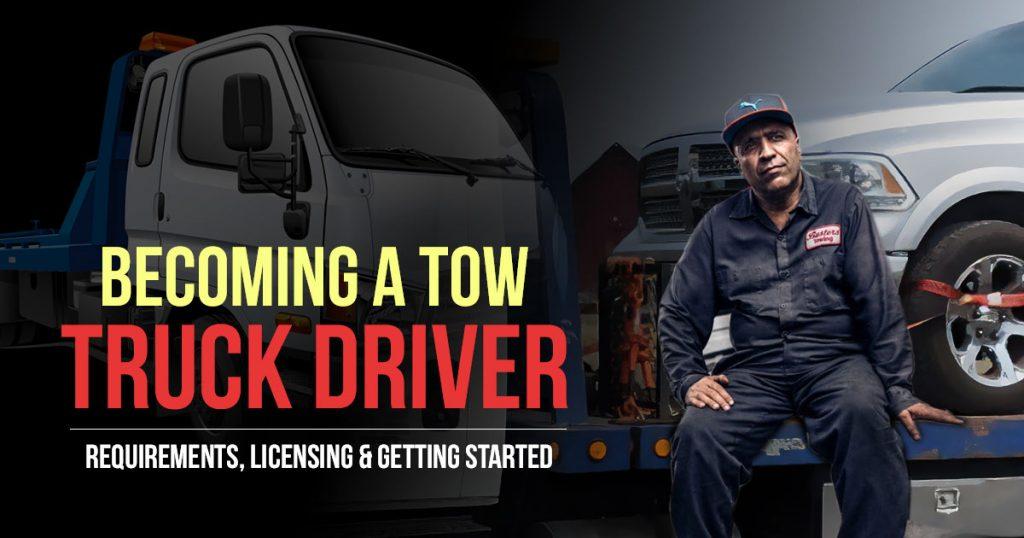The trucking industry plays a crucial part in keeping our economy moving, with a growing need for skilled drivers to transport goods across the country. In fact, the Bureau of Labor Statistics projects a steady rise in truck driving positions, largely because transporting goods is essential and online shopping is booming. Driving a truck isn’t like driving a regular car; it demands special skills and training to handle these big vehicles safely. It’s important to improve these skills to ensure safety and efficiency on the road. Truck driving offers various career paths, one of which is towing. Towing is a specialized area that requires a keen ability to handle the vehicle with care and precision.
Understanding Tow Trucking
Tow trucking is a special part of the trucking industry that focuses on moving vehicles that are broken down, parked illegally, or involved in accidents. Tow truck drivers help keep roads clear and safe by quickly removing these vehicles. Their work is important for helping drivers who are stuck, clearing accident scenes, and moving vehicles for various reasons.
Tow trucking is unique because it requires careful handling of the tow truck. Unlike other truck driving jobs where goods are transported, tow trucking involves moving vehicles that might be damaged or awkwardly positioned. This requires excellent driving skills to ensure the safe and precise movement of both the tow truck and the vehicle being towed.
There are qualifications that need to be fulfilled in order to work as a tow truck driver. Getting a Commercial Driver’s License (CDL), which is required to operate the larger vehicles used in towing, is one of the primary requirements.
Can you drive a tow truck with a regular license?
Generally speaking, a standard driver’s license is insufficient to operate a tow truck. Because of their size and the unique way they operate, tow trucks are categorized as commercial vehicles. This means that a CDL is typically required to ensure drivers can handle the vehicle safely and effectively.
But depending on the state you are in, the precise requirements may change. See if there are any exceptions or additional rules you need to abide by by consulting your local regulations.
CDL for Tow Truck Drivers
Getting a Commercial Driver’s License (CDL) is a must for anyone who wants to drive tow trucks. This license shows you have the skills needed to handle big vehicles safely. Here’s a simple guide on how to get your CDL:
1. Check Eligibility
First, make sure you meet the minimum requirements. To drive within your state, you must be at least eighteen (18), and to drive between states, you must be at least twenty-one (21). To demonstrate that you are fit to operate a commercial vehicle, you must additionally pass a health examination.
2. Get a Learner’s Permit
A Commercial Learner’s Permit (CLP) is the next requirement. You will need to pass a written exam covering driving safety and regulations in order to obtain this. You can get experience operating a commercial vehicle with a CLP, but you will need a CDL-holder to oversee you.
3. Complete Training
Enroll in a CDL training course. These programs are available at community colleges, private schools, or trucking companies. You’ll learn in a classroom and get behind-the-wheel practice, focusing on how to inspect and drive large vehicles safely.
4. Pass the Knowledge Test
Study the CDL manual to prepare for the written test. This test will cover driving laws, vehicle safety, and operation. It’s important to study well so you’re ready for the road.
5. Take the Skills Test
This test checks how well you can handle the truck. It includes three parts: checking the vehicle for safety, basic driving controls, and actual driving on the road. You’ll need to show you can drive safely in real traffic situations.
6. Get Endorsements
Depending on your job, you might need extra endorsements. For instance, you require an air brake endorsement if the truck has air brakes. If you handle hazardous materials, you’ll need a special endorsement for that too. Each one requires passing another test.
7. Submit Application
Once you have completed all of your exams, complete your CDL application and any associated costs. Along with your test results, you will need to present identification and proof of residency. Once approved, you’ll receive your CDL, officially allowing you to drive tow trucks and other heavy vehicles.
Finding a Job as a Tow Truck Driver
Now that you have your Commercial Driver’s License (CDL), you’re ready to start your journey as a tow truck driver. There are many places to look for jobs. Towing companies are a great option since they regularly need skilled drivers. You can also check with roadside assistance services that help drivers in need. Sometimes, local government agencies hire tow truck drivers to help with things like clearing roads or handling impounded vehicles.
The need for tow truck drivers is generally consistent, so finding a job might be easier than in some other fields. Being flexible with your hours and where you work can help you find a job faster. As you gain experience, you might find even more opportunities, such as better-paying jobs or specialized roles.
To find a job, look at online job sites, attend networking events, and visit local towing companies to ask about openings. Stay positive and keep trying—finding the right job might take a little time, but with effort and your new skills, you’ll soon find a spot in this important and rewarding career.
